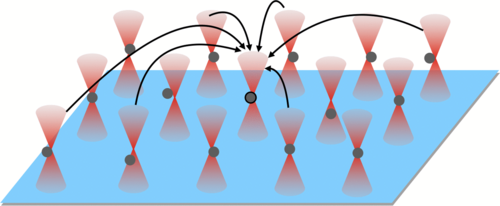This is a joint project with Dr. Cyriaque Genet of the Institut de Science et d’Ingénierie Supramoléculaires (ISIS) at the university of Strasbourg. Stochastic thermodynamics is an emergent field of research that uses stochastic variables to better understand the non-equilibrium dynamics of many microscopic systems such as colloidal particles. In the experiments carried out at ISIS, a Brownian particle is immersed in water and trapped by a laser beam inside a harmonic potential. The position of the particle is our stochastic variable, which can be controlled by varying the stiffness of the trap. We devised an optimal protocol that transfers the particle from one equilibrium to another, while minimizing the work expended and the duration of the transfer. The theoretical predictions fit nicely with the experimental results.
We also proposed a method to construct a classical analog of a quantum system, namely a quantum particle confined in a potential well and immersed in a thermal bath. The classical analog is made out of a collection of identical wells where classical particles are trapped. The distribution of the classical positions is used to reconstruct the quantum Bohm potential, which in turn acts on the shape of the potential wells. As a result, the classical particles experience an effective “quantum” force. This protocol was tested with numerical simulations using single-and double-well potentials, evidencing typical quantum effects such as long-lasting correlations and quantum tunneling. For harmonic confinement, the analogy was implemented experimentally using micron-sized dielectric beads optically trapped by a laser beam.


Recent publications
- Optimal protocols and universal time-energy bound in Brownian thermodynamics (2020)
- Probing quantum effects with classical stochastic analogs (2021)
- Harvesting information to control non-equilibrium states of active Matter (2022)
- Optimal time-entropy bounds and speed limits for Brownian thermal shortcuts (2023)
